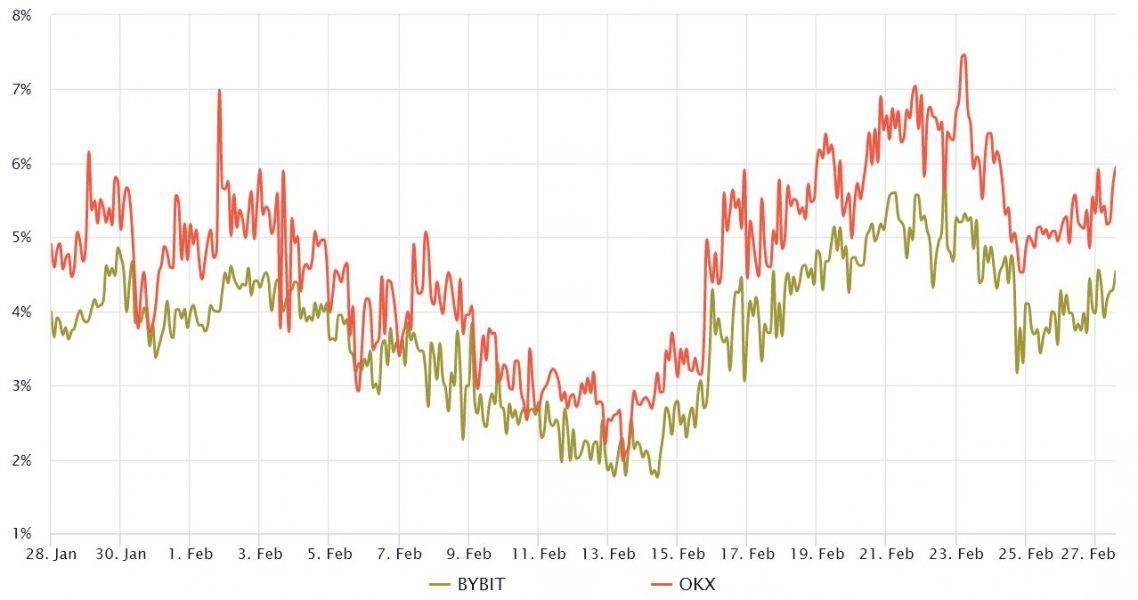BTC’s correction to $22,750 followed negative remarks from financial regulators, but key Bitcoin price metrics show bulls remain optimistic.
Bitcoin price broke above $25,000 on Feb. 21, accruing a 53% year-to-date gain. At the time, it made sense to expect the rally to continue after U.S. retail sales data from the previous week vastly surpassed the market consensus. This fuelled investors’ hope for a soft landing and a possible averted recession in the U.S. economy.
The apex of the U.S. Federal Reserve’s strategy success would be increasing interest rates and scaling back its $9 trillion balance sheet reduction without significatively damaging the economy. If that miracle happens, the outcome would benefit risk assets, including stocks, commodities and Bitcoin.
Unfortunately, the cryptocurrency markets took a hit after the $25,200 level was rejected and Bitcoin price plunged 10% between Feb. 21 and Feb. 24. Regulatory pressure, mainly from the U.S., partially explains investors’ rationale for the worsening market conditions.
In a Feb. 23 New York Magazine interview, Securities and Exchange Commission Chair Gary Gensler claimed “everything other than Bitcoin” is potentially a security instrument and falls under the agency’s jurisdiction. However, multiple lawyers and policy analysts commented that Gensler’s opinion is “not the law.” Hence, the SEC had no authority to regulate cryptocurrencies unless it proved its case in court.
Additionally, at a G20 meeting, U.S. Treasury Secretary Janet Yellen stressed the importance of implementing a strong regulatory framework for cryptocurrencies. Yellen’s remarks on Feb. 25 followed International Monetary Fund managing director Kristalina Georgieva pointing out that “if regulation fails,” then outright banning “should not be “taken off the table.”
Let’s look at Bitcoin derivatives metrics to better understand how professional traders are positioned in the current market conditions.
Asia-based stablecoin demand is stagnant
Traders should refer to the USD Coin premium to measure the demand for cryptocurrency in Asia. The index measures the difference between China-based peer-to-peer stablecoin trades and the United States dollar.
Excessive cryptocurrency buying demand can pressure the indicator above fair value at 104%. On the other hand, the stablecoin’s market offer is flooded during bearish markets, causing a 4% or higher discount.

After peaking at 4% in late January, the USDC premium indicator in Asian markets has declined to a neutral 2%. The metric has since stabilized at a modest 2.5% premium, which should be interpreted as positive considering the recent regulatory FUD.
BTC’s futures premium stuck even after price rejected at $25,000
Bitcoin’s quarterly futures are the preferred instruments of whales and arbitrage desks. Due to their settlement date and the price difference from spot markets, they might seem complicated for retail traders. However, their most notable advantage is the lack of a fluctuating funding rate.
These fixed-month contracts usually trade at a slight premium to spot markets, indicating that sellers are requesting more money to withhold settlement longer. Consequently, futures markets should trade at a 5% to 10% annualized premium on healthy markets. This situation is known as contango and is not exclusive to crypto markets.

The chart shows traders flirting with the neutral sentiment between Feb. 19 and Feb. 24 as the Bitcoin price held above $23,750. However, the indicator failed to enter the neutral-to-bearish 0% to 5% area as additional regulatory uncertainty was added, especially after Gensler’s remarks on Feb. 23. As a result, it became clear that pro traders were not comfortable with Bitcoin price breaking above $25,000.
Weak economic data shifted control to the bulls
Since Feb. 25, Bitcoin price has gained 4.5%, indicating that the impact of the regulatory newsflow has been limited. More importantly, the global stock market reacted positively on Feb. 27 after the U.S. Commerce Department reported durable goods orders down 4.5% in January versus the previous month. This data added pressure for the Fed to reduce its interest rate hike program earlier than expected.
Since Bitcoin’s 50-day correlation with the S&P 500 futures presently stands at 83%, cryptocurrency traders are more inclined to support risk asset prices strengthening throughout the week. A correlation indicator above 70% indicates that both assets are moving in tandem, meaning the macroeconomic scenario is likely playing a pivotal role in determining the overall trend.
Unless there’s added pressure from regulators or conflicting economic data, odds favor Bitcoin bulls considering the BTC futures and Asian stablecoin metrics.



